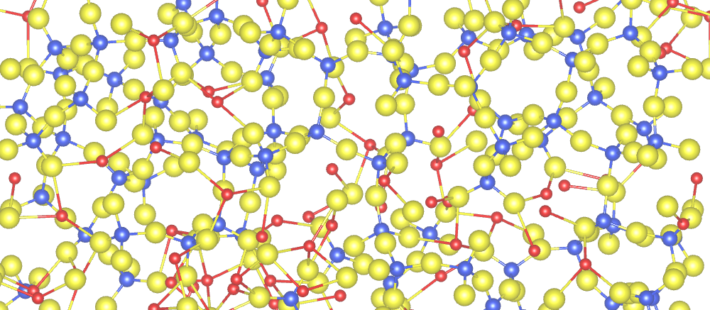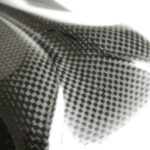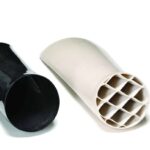It’s hard to predict the properties of a glass from its composition because glasses are disordered structures. A new machine learning model can predict the density and stiffness of glasses. This information can be used to design better reinforcing fibers for strong and lightweight composite materials in automobiles and wind turbines.
Liang Qi, a professor of materials science and engineering at the University of Michigan, answered questions about his group’s new paper in npj Computational Materials.

What is elastic stiffness? Elastic and glass don’t seem to be two words that go together.
All solid materials, including glass, have a property called elastic stiffness—also known as elastic modulus. It’s a measure of how much force per unit area is needed to make the material bend or stretch. If that change is elastic, the material can totally recover its original shape and size once you stop the force.
Why do we want light and very stiff glasses?
Elastic stiffness is critical for any materials in structural applications. Higher stiffness means that you can sustain the same force loading with a thinner material. For example, the structural glass in car windshields, and in touch screens on smartphones and other screens, can be made thinner and lighter if the glasses are stiffer. Glass fiber composites are widely used lightweight materials for cars, trucks and wind turbines, and we can make these parts even lighter.
Lighter vehicles can go further on a gallon of gas—6-8% further for a 10% reduction in weight, according to the U.S. Office of Energy Efficiency and Renewable Energy. Weight reduction can also significantly increase the range of electric vehicles.
Lighter, stiffer glass can enable wind turbine blades to transfer wind power into electricity more efficiently because less wind power is “wasted” to make the blades rotate. It can also enable longer wind turbine blades, which can generate more electricity under the same wind speed.
What are the challenges in trying to design light but resilient glasses?
Because glasses are amorphous—or disordered—materials, it’s hard to predict their atomistic structures and the corresponding physical/chemical properties. We use computer simulations to speed up the study of glasses, but they require so much computing time that it is impossible to investigate each possible glass composition.
The other problem is that we don’t have enough data about glass compositions for machine learning to be effective at predicting glass properties for new glass compositions. Machine learning algorithms are fed data, and they find patterns in the data that enable them to make predictions. But without enough of the right training data, their predictions aren’t reliable—just like a political poll conducted in Ohio cannot predict the election in Michigan.
How did you overcome these barriers?
First, we used existing high-throughput computer simulations to generate data on the densities and elastic stiffnesses of various glasses. Second, we developed the machine learning model that is more suitable for a small amount of data—because we still didn’t have a lot of data by machine learning standards. We designed it so that the key thing it pays attention to is the strength of the interaction between atoms. In essence, we used physics to give it hints about what was important in the data, and that improves the quality of its predictions for new compositions.
What can your model do?
While we trained our machine learning model with glasses made of silicon dioxide and one or two other additives, we found that it could accurately predict the lightness and elastic stiffness of more complex glasses, with more than 10 different components. It can screen as many as 100,000 different compositions at once.
What are the next steps?
Lightness and elastic stiffness are only two properties that are important in designing glasses. We also need to know their strength, toughness, and their melting temperatures. By openly sharing our data and methods, we hope to inspire the development of new models in the glass research community.
The research was supported by Continental Technology, based in Indianapolis.
More information in Study abstract: Predicting densities and elastic moduli of SiO2-based glasses by machine learning
Source: University of Michigan
Image credit: Qi Group










